Dating apps are setting men and women up for failure — but for different reasons
Men are being devalued online, and it’s ultimately hurting everyone.
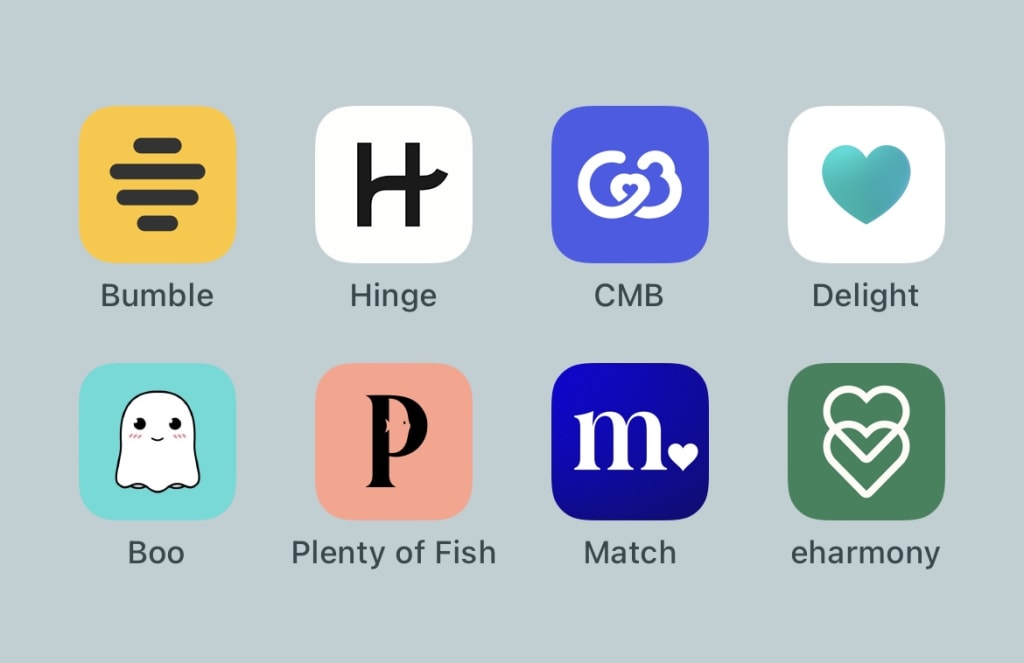
Are you on a dating app? If so, you’re screwed — and not in the way you hoped. The apps are structurally flawed, and that’s bringing about a mass inequity which is messing things up for everyone. To understand it, we need to briefly refresh our knowledge on Economics 101.
Most of us are familiar with the basic tenets of supply and demand, and how that governs price/value. Put 100 people in the desert for two days and have them bid for a single water bottle, and that water bottle is now worth a million dollars. Flip it and have those same people bid for 10,000 water bottles, and the same bottle will go for less than a buck. The more people who want something and the less of that thing there is, the more its value rises. Well, apparently, it works the same way with people.
Dating App Data
A review of the popular dating app Bumble’s monthly active users found that 67.4% of them were male. For Tinder, it was 76% male. That’s a 2:1 and 3:1 ratio of men to women! Though not all of these individuals are heterosexual, most are, so supply and demand tells us that men are being devalued the moment they enter the online dating pool.
At a basic ratio, this would suggest that women are getting 3–4 times as many likes and matches on the app as men, but because women have so many options, they also end up being more selective. I mean, who wouldn’t be? Conversely, men — most of which are being starved for attention on the apps — are being less choosy in response. As a consequence, women on Tinder are “liking” 14% of the profiles they’re encountering, while men are swiping right three times as much, 46% of the time.
We don’t have data directly from dating apps to confirm this, but a well-made simulation (unpacked in the video below) showed that all else being equal, with the numbers above being factored in, women would be getting an average of 92.1 likes a day to men’s 7 likes a day!
However, to make things even worse for men, that average is highly skewed towards the top 10–20% of men. An engineer working for Hinge said in a Q&A that 50% of likes sent to women go to the top 25% of women, while 50% of likes sent to men go to the top 15% of percent of men. That’s a much smaller amount of likes going to men, and they’re significantly more concentrated among fewer men.
To illustrate just how uneven the distribution is, the engineer at Hinge stated that if we compared the distribution of likes for each gender to wealth inequality in countries around the world, “the female dating economy [would rank] as 75th most unequal (average — think Western Europe) and the male dating economy as the 8th most unequal (kleptocracy, apartheid, perpetual civil war — think South Africa).”
Another interesting piece of data, coming from OkCupid, shows how attractive men and women rate each other on these sites. Whereas men deem roughly equal numbers of women to be below average as above average in terms of their attractiveness, women rate 4 out 5 men as worse looking than average! Here is the distribution visualized:
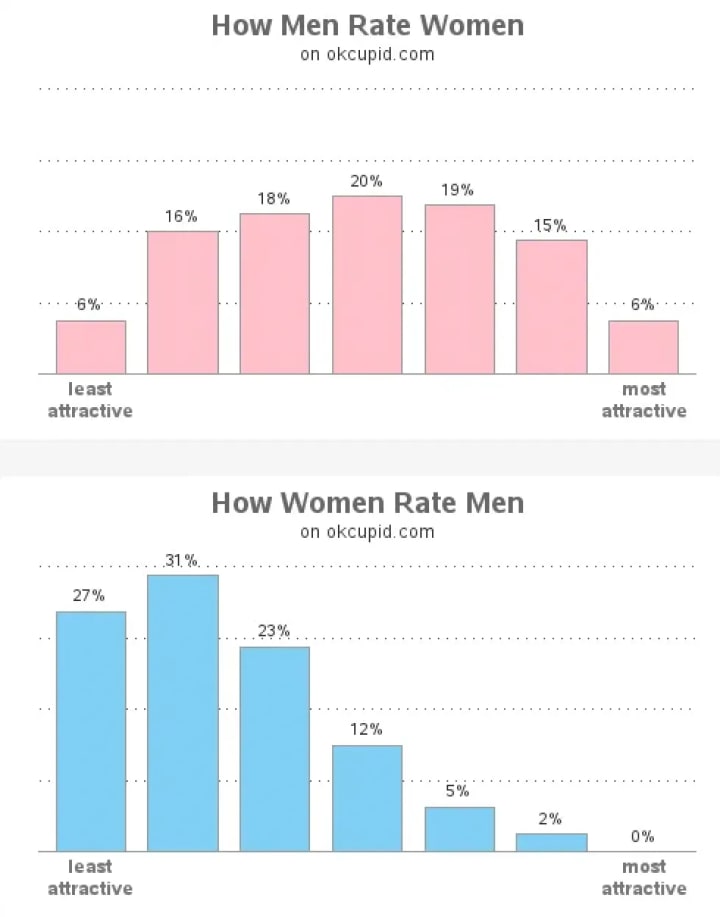
All in all, we get a picture of feast and famine for men: The men at the top are getting an overabundance of likes and matches. The same simulation referenced earlier even went on to predict that it’s likely the top 10% of men are actually getting even more matches than the top 10% of women. However, with significantly less likes to go around, and the majority of those likes going to a small portion of the men, the average man is being hung out to dry.
Back to Reality
One thing that’s obvious from the data is that the vast majority of men are being hugely devalued once they go onto a dating app. However, this devaluation has no reason to carry over into “real life.” In the US, for example, there are actually slightly more women than men. Thus, when a man gets a woman off a dating app and meets her in person, the pair are likely to feel a sharp shift in the dynamics between them. The man, artificially devalued and made to lower his standards, is now meeting with a woman who was given such an overabundance of options that she’s raised her standards beyond where they naturally would be.
The societal consequences of this are visible everywhere. “If he wanted to, he would,” has become a slogan for frustrated women who can’t get the men they’re interested in to commit. The term “incel” (short for “involuntary celibate”) has made its way into the dictionary. Frustrated men are throwing around terms like “hypergamy” and creating things like “the female delusion calculator.”
For those that don’t know, the “female delusion calculator” (screenshotted below) is a site you can go to where women can select the characteristics they want in a man to see just how rare men that meet their expectations are.
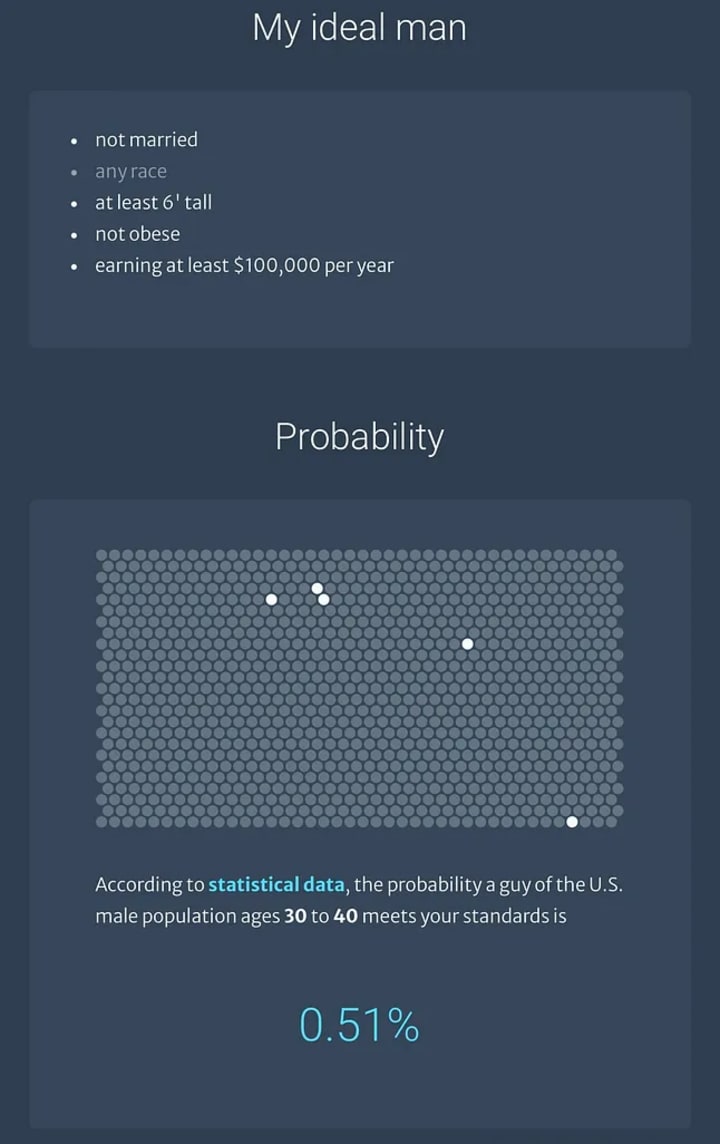
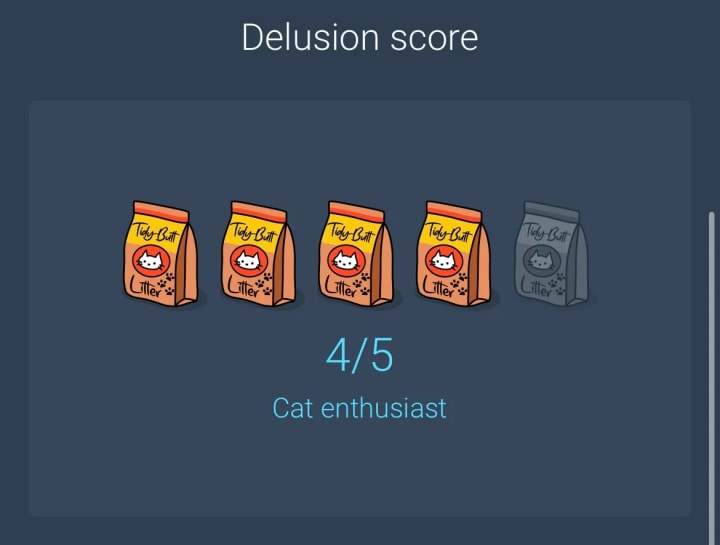
People who get on the apps are likely to fall into three camps, and all of them are getting punished, in their own way, by the systemic inequity. The worst experience of all is probably that of the average man. Most men are being devalued to dirt and end up with virtually no date options at all. It’s sure to frustrate them and harm their self-esteem.
The next are the men in the upper echelons, the top 10–20%. These men are getting a ton of date options, but they’re still being devalued, so whomever they might see as a good match in real life is likely not among the matches they’re getting online. These men are likely to end up in a situation like mine, where I went on a whopping 57 first dates last year, but didn’t end up with anyone. Almost all of the women were significantly more into me than I was into them, and I actually fell into a brief depression as I kept having to end things with different women.
Finally, we have the experience of the women, which should be largely monolithic. They would seem to be in a good position at first, as they can really get the pick of the litter when it comes to men. However, this leads most of them to aim for a small minority of men. These men, in turn, have a great deal of options. Also, as was stated, there’s no reason for the inequity to carry over into real life. Thus, they may be able to get dates with these men, and carry on some type of relationship with them, but they’re likely to be more into the man than the man is into them, as the playing field where they first called each other a “match” was hugely skewed in their favor. If they were a match there, they’re not likely to be a lasting match in real life.
For the most part, this imbalance negatively affects the men while they’re on the app, and it, then, does the same to the women once they’re off of it. In the end, it gets everyone.
Correcting the Imbalance
If dating apps are ever going to be a healthy development for society, something needs to be done to reinflate male value on them back to real-life levels. Should we make it so that only men can use filters? I say that jokingly, but in all seriousness, I had a female friend complain to me how she can’t find a serious relationship online, and my simple advice was: “Stop using your best pictures.”
Ultimately, if the change is going to happen by way of the users, then women are going to have to take charge. They’re the ones holding the power on the apps. If women can try lowering their standards while online, to bring things back to reality, maybe we can all find a real match with more ease.
If the people working on the dating apps themselves were to try to make the change, they could try taking the metrics of attractiveness the algorithms are already giving profiles, and make it so that women are being shown men that are ranking just below them by the algorithm’s measures. But this probably won’t be good for business: You can’t blame women for wanting a shot at the guys they find absolutely dreamy. They’ll likely go wherever allows for that possibility.
There are a lot of ways to approach the issue, but truthfully, it’s hard to imagine that any of these changes will actually occur. It looks like so long as you’re using dating apps to find love, the deck is probably going to be stacked against you.
Conclusion
There are a lot of dimensions I omitted for the sake of simplicity. For example, dating apps have equally startling inequities across different racial demographics. Likewise, as one might expect, the data for members of the LGBTQ+ community differs significantly from the data primarily dealing with heterosexuals covered throughout this article.
There are also an increasing number of paid subscriptions and other new features, which can boost your visibility and offer you better chances of getting matches on these platforms. These may be able to influence the results in a positive way going forward.
Hopefully, there are more happy outcomes hidden in the data than are shown here and changes for the better coming our way. But as things stand, there’s a lot gone awry in the world of internet dating.
About the Creator
Martin Vidal
Author of A Guide for Ambitious People, Flower Garden, and On Authorship
martinvidal.co
martinvidal.medium.com
Instagram: @martinvidalofficial
Enjoyed the story? Support the Creator.
Subscribe for free to receive all their stories in your feed. You could also pledge your support or give them a one-off tip, letting them know you appreciate their work.


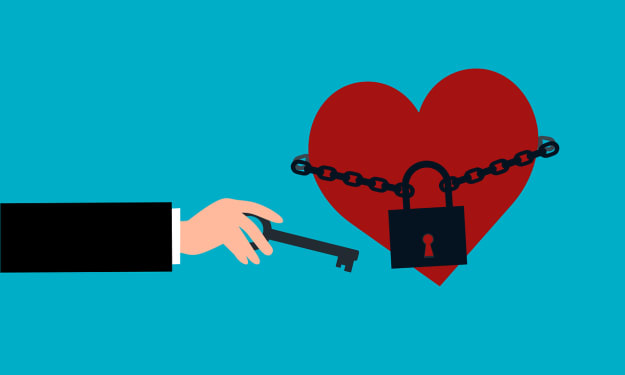

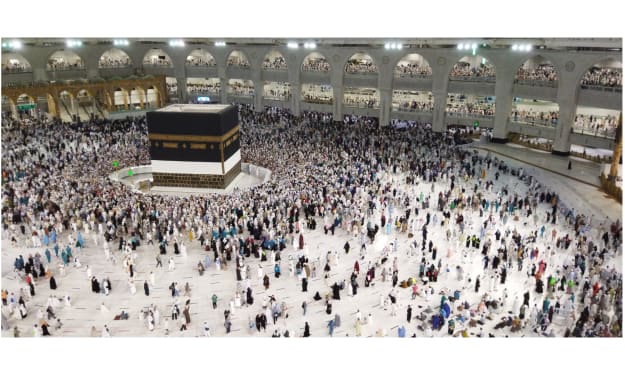

Comments
There are no comments for this story
Be the first to respond and start the conversation.